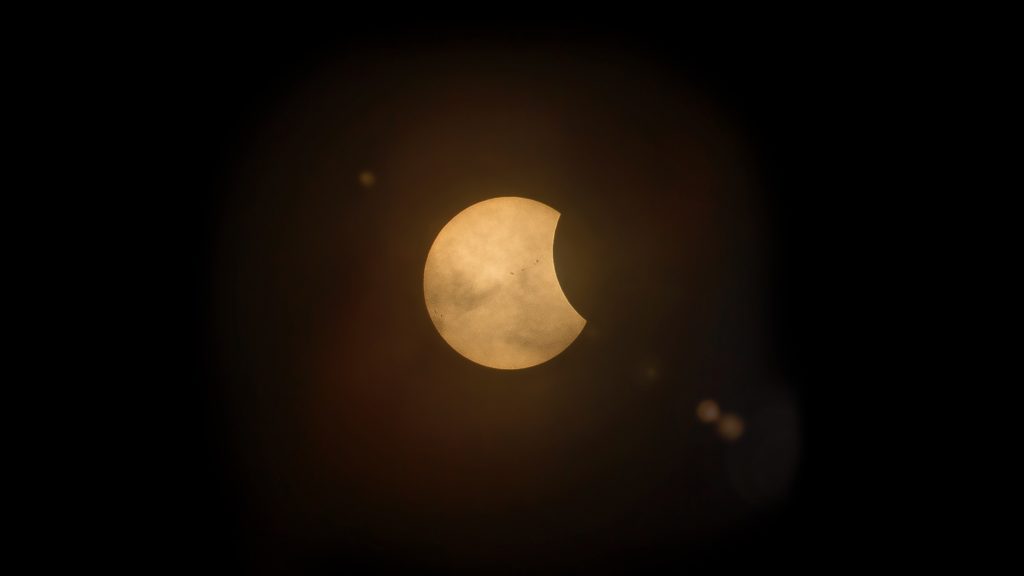This year has not been the easiest, but luckily it will be ending with a spectacular lunar show. Set your reminder to look up at the night sky on Monday, December 14, as a partial solar eclipse will be visible.
According to Time and Date, the partial solar eclipse will begin on December 14 at 6.51pm, reach its maximum point at 7.43pm and end at approximately 7.53pm. It will last for a total duration of one hour and one minute.
A partial solar eclipse occurs when the Moon comes between the Sun and Earth, but the Moon only partially covers the Sun’s disk.
This means that the Moon, the Sun and Earth don’t align in a perfectly straight line, and the Moon casts only the outer part of its shadow, the penumbra, on Earth. From our perspective, this looks like the Moon has taken a bite out of the Sun.
There are 3 distinct stages of a partial solar eclipse. First, the partial solar eclipse begins, when the moon moves over the Sun’s disk. This is followed by the maximum eclipse, then the eclipse reaches its maximum magnitude and the Moon covers more of the Sun’s disk than at any other moment during the eclipse. The partial solar eclipse then ends and the moon stops covering the Sun.
Remember to not stare directly at the sun, as it is harmful to your eyes and can cause permanent damage. If possible, get a pair of ISO-certified eclipse glasses to safely enjoy this event. You can also make your own box projector or use a telescope or binoculars.
While Capetonians will be experiencing a partial eclipse, those in Pucón, Chile will witness a total solar eclipse, which is when the moon, Earth and sun perfectly line up. This is a rare moment that won’t occur in Pucón for another 300 years, and the event will be broadcast worldwide via livestream.
Picture: Pexels

